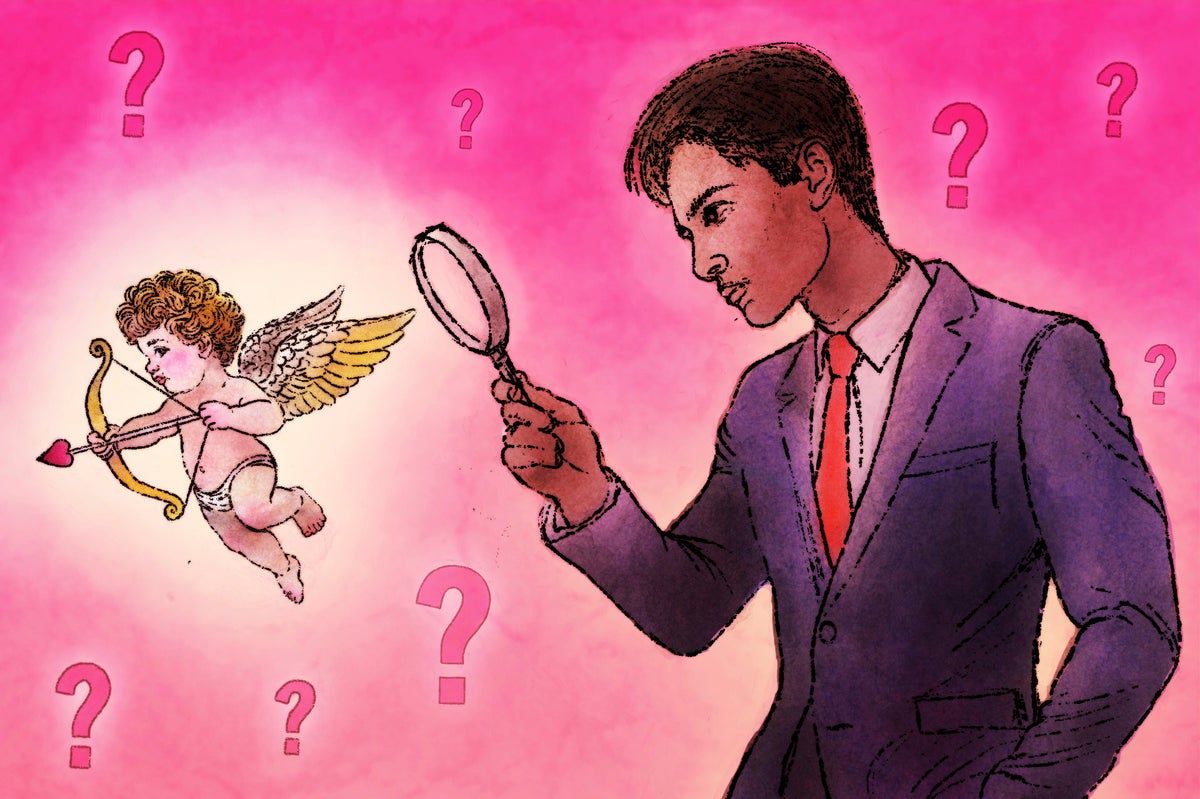
Bearing cards, flowers, chocolates and poetry, lovers have always swooned on Valentine’s Day as cherubs circled overhead. Right?
Or is the history darker, marked by Roman bacchanalia, martyrs and lies?
Innumerable legends claim to explain the origins of Valentine's Day, but as is the case with legends, they leave many questions unanswered. Here are a few:
Where did Valentine’s Day originate?
For years, the consensus among historians was that the holiday had something to do with an ancient Roman festival called Lupercalia that fell in mid-February. Noel Lenski, a Yale University historian, pointed to the seasonal and thematic connections between Lupercalia and modern Valentine's Day.
Both are erotic festivals, in a sense, but the ancient one — which included pairing off women and men by lottery — also involved religious purification and atonement.
“Naked young men, drunk, would go running around Palatine Hill swatting virginal women with strips of dog fur and goat fur to make them fertile,” Lenski said.
According to one legend, Pope Gelasius wanted to put an end to the debauchery in the late fifth century. He declared Feb. 14 as the feast day of a St. Valentine, who had been martyred about 200 years before.
But that theory emerged in an 1807 book without any evidence to support the connection, said Elizabeth White Nelson, a University of Nevada Las Vegas history professor.
“People who think that’s the story haven’t read the letter that he actually wrote about Lupercalia,” she said, referring to the pope. “Is he pissed off about Lupercalia? Yeah. But does it have anything to do with St. Valentine? It’s very, very hard to find any actual writing that says that.”
Was St. Valentine a real person?
The most cited legend is about a priest named Valentine who was executed in third-century Rome for marrying couples against the will of the pagan Emperor Claudius II. (He also is said to have cured the blindness of his jailer’s daughter.) Another St. Valentine, the bishop of Terni, was martyred around the same time, but little is known about him.
A couple centuries later, a prominent family named Valentine may have promoted themselves by exaggerating an ancestor’s story after Christianity had become the prevailing religion, Lenski said.
“They say, ‘Oh, by the way, we have this famous ancestor who was a bishop, and he had been persecuted by the emperor for sanctifying marriages,’” he said.
The story prevailed, but the lack of evidence prompted the Catholic Church in 1969 to remove St. Valentine as the primary saint celebrated on Feb. 14. Now, it’s officially the feast of Saints Cyril and Methodius, the missionary brothers who spread the Cyrillic alphabet to Eastern Europe.
What's love got to do with it?
To further confuse things, there were many St. Valentines. As many as 50 saints with some variation of the spelling have been recognized by the Catholic Church, said Henry Kelly, a research professor at University of California Los Angeles.
According to Kelly, author of “Chaucer and the Cult of Saint Valentine,” the English writer was the first to make the connection to love — but he was talking about another St. Valentine whose feast day was May 3. To commemorate King Richard II's engagement on that day in 1381, Geoffrey Chaucer wrote a love poem.
“He had Italian friends who told him that it was the feast of St. Valentine, the first bishop of Genoa,” Kelly said. “And so he picked that day as the day on which all the birds returned to choose their mates for the year.”
Chaucer continued writing poems every May that associated love, the rites of spring and St. Valentine. Shakespeare and other poets followed suit. Because the Roman Valentine was the most famous one, people conflated the feast days and now celebrated it in February, Kelly said.
“It was the middle of winter, so there weren’t any birds around, there weren’t any flowers around, and so they started making up things about Valentine,” he said.
When did it become the Valentine’s Day we recognize today?
By the late 18th century, the tradition had solidified in England and spread to the United States, with people writing poetry and hand-making cards, White Nelson said. Around the 1830s, companies began manufacturing Valentine kits that were assembled from lace paper and cutouts of birds and cupids.
Heart-shaped boxes of chocolates would come a few decades later, as would the accusations that the holiday was created to sell cards, flowers and candy, White Nelson said. People were complaining in women’s magazines in the late 19th century that Valentine’s Day was too commercial.
“Everybody’s always expecting Valentine’s Day to die out, and it never does,” she said. “It’s sort of like saying, ‘Coney Island’s too crowded. Nobody goes there anymore.’”
To be fair, none of the myth-busting historians interviewed for this article resented that a day celebrating love ended up in February. In fact, they said the opposite.
“Winter is endless,” Kelly said. “The cold is never ending, and we’re grateful for something to rejoice over.”
Kelly just gives his wife another Valentine on May 3.
___
EDITOR’S NOTE: Albert Stumm lives in Barcelona and writes about travel, food and wellness. Find his work at https://www.albertstumm.com







